Indistylemen
The Blazer Guide
- Get link
- X
- Other Apps
The blazer is an iconic piece of menswear as well as a central piece of any gentleman’s wardrobe. Unfortunately, the definition of a “blazer” has gotten hazier over time. To make sure you’re taking advantage of the blazer’s remarkable versatility, we will define a blazer, discuss its history, modern interpretations of the jacket and elaborate on how to wear it best.
What is a Blazer?
Let us start by first addressing the most vexing question – what exactly is a blazer? One might be tempted to think it is any jacket that happens to be worn without matching pants. The Oxford American Dictionary describes it as a “sports jacket not worn with matching trousers.” Meanwhile, the Oxford English Dictionary describes it as “a coloured jacket worn by schoolchildren or sports players as part of a uniform” or “a plain jacket not forming part of a suit but considered appropriate for formal wear.” The Free Dictionary describes it as “A lightweight, often striped or brightly coloured sports jacket having pockets and notched lapels.” And the Merriam-Webster dictionary describes it as “a jacket that is worn over a shirt and that looks like a suit jacket but is not part of a suit.” Clear as mud, eh?The 8 Characteristics of a Blazer
Clearly the various dictionaries are neither very specific nor complete, but a few things can be inferred from men’s clothing encyclopedias and from our assumptions of what a blazer is. In many countries, the term “blazer” is synonymous for any jacket, especially in womenswear, but for the purpose of this article, we will use the technical definition of a blazer:- A standalone jacket worn with trousers of a contrasting color, pattern or material.
- It is solid colored or has bold, vividly colored stripes
- Solid colors are almost exclusively a shade of navy blue, but can include othe solid colors such as bottle green, white or red.
- May have contrasting piping, braiding, or trim.
- Comes in double-breasted 6×2, 6×3, 8×3 configurations, or single-breasted with one to three buttons.
- The buttons are one of the two distinctive features of a blazer – usually buttons are made of contrasting mother of pearl, silver, pewter, brass or gilt embossed with anchor and a scroll (Nelson buttons) or a crest/logo of the school, college, club, sports team, or association.
- In some cases, the second distinctive feature is the presence of the crest or badge of the school, college, club, sports team, association, etc. as the case may be on the breast pocket. The crest/badge often denotes the wearer’s individual position within the specific organization.
- The jacket is usually made of navy blue serge; hopsack, worsteds or wool flannel are classic alternatives, while fresco or linen are used for warmer weather. Striped blazers are often made of wool flannel or cotton.
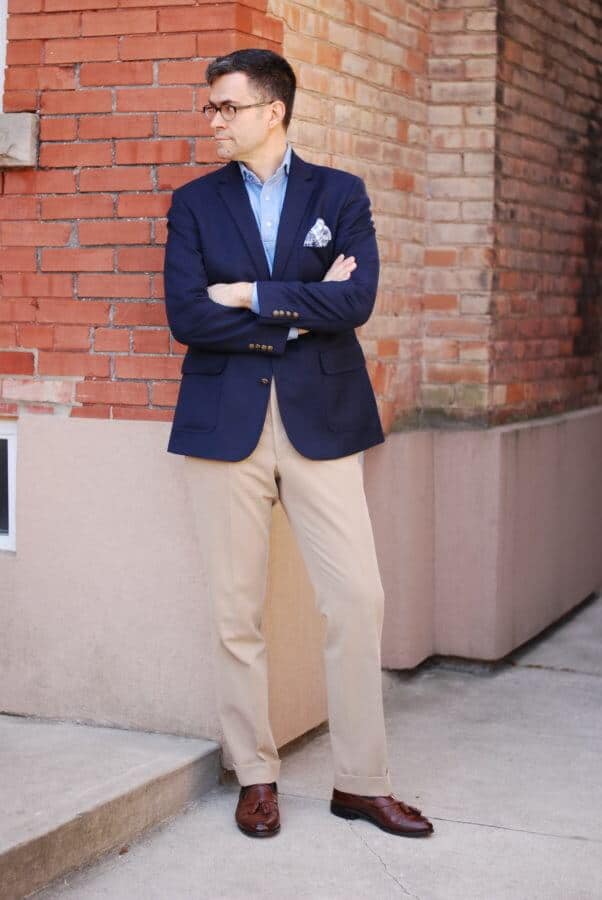
Business Casual Outfit by the Hogtown Rake – Single Breasted Blazer with popover shirt, cotton pocket square, khakis and brown tassel loafers
History of the Blazer
If rightly describing the characteristics of the blazer was a daunting task, tracing its history proves to be no less difficult. There seem to be multiple theories of how the blazer got its name, with one source listing as many as ten! However, to narrow things down, the blazer as we know it today seems to have evolved from two origins.Blazer Origin No. 1 – Lady Margaret Boat Club
Members of the Lady Margaret Boat Club (founded in 1825 by twelve members of St. John’s College, Cambridge) wore bright, scarlet red-colored flannel jackets, and since they blazed they were named blazers. The club still exists today and keeps with the same tradition. Interestingly, gold buttons as well as piping are only reserved for certain members. Those with First May Colors are entitled to wear piping and have gold buttons on their blazer while First Lent or Second May Colors are entitled to wear silver buttons on their blazer only. Gradually the term was used to denote jackets with a similar association – much to the annoyance of the purists of the day, which can be seen in this spirited response from a reader of the London Daily News in 1889:“In your article of to-day‥.you speak of ‘a striped red and black blazer’, ‘the blazer’, also of ‘the pale toned’ ones.‥ A blazer is the red flannel boating jacket worn by the Lady Margaret, St. John’s College, Cambridge, Boat Club. When I was at Cambridge, it meant that and nothing else. It seems from your article that a blazer now means a colored flannel jacket, whether for cricket, tennis, boating or seaside wear.”In hindsight, we know that he lost the battle!
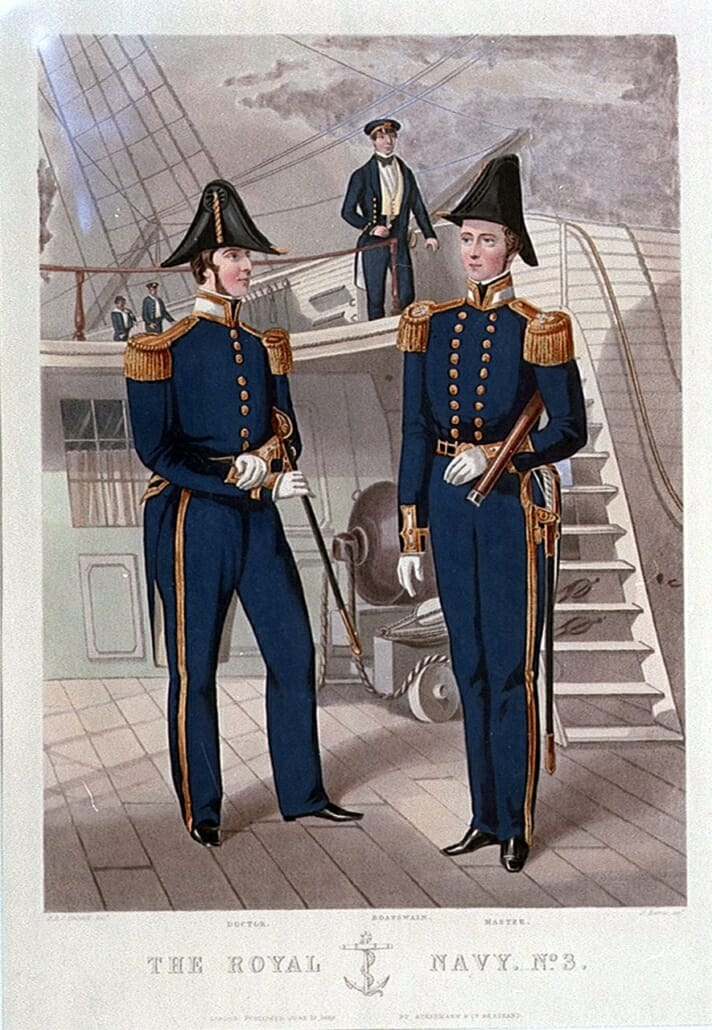
British Naval uniforms in the mid-1800s

The blazer can be bestowed upon the winner of a sporting event, such as the Masters golf tournament or the Congressional Cup Regatta (inset)
Rowing or Regatta Blazers
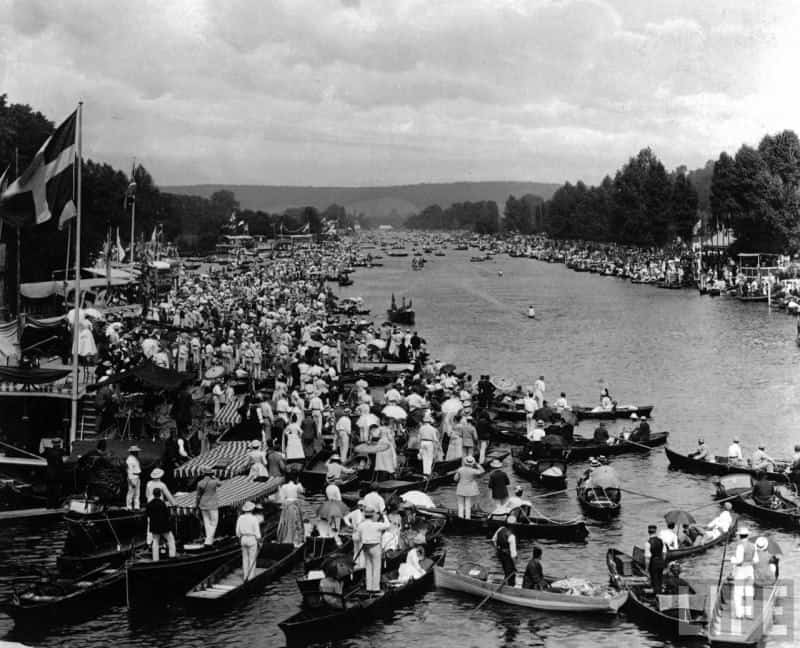
Henley Royal Regatta in 1893
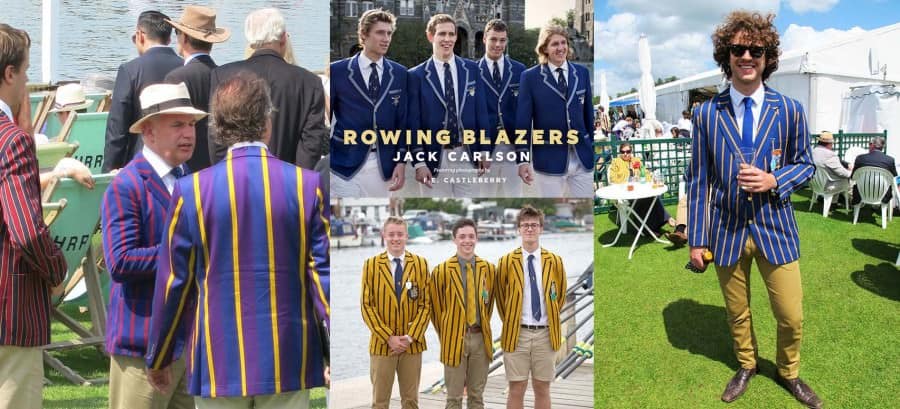
Rowing Blazers at Henley Royal Regatta, England
Navy Serge – The Classic
Navy serge is a worsted wool that is probably the most popular fabric choice for a blazer. Usually made of merino wool, it has a characteristic twill structure and in my experience it is prone to get shiny in areas of frequent friction. For this reason, be careful when ironing or dry cleaning because too much heat or direct contact with the iron will also make it look shiny in an unpleasant way. If you want a deliberately shiny blazer, look for a wool mohair blend; that looks much more sophisticated than a worn-out serge.Hopsack
Hopsack has an open weave structure that will immediately add more texture to your outfit, but it is also much more prone to pulled threads. So if you have children, pets or often come in contact with items that could pull a thread, hopsack may not be the best choice for you.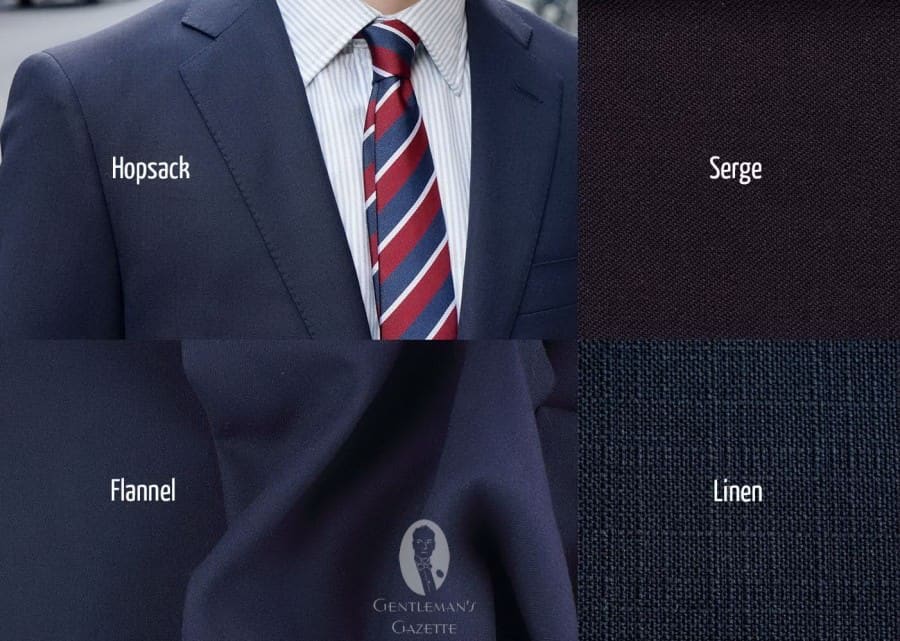
Blazer fabrics – Serge, hopsack, wool flannel, linen, worsteds…
Flannel
For winter blazers, a true wool flannel is ideal if it’s not going to be in heavy rotation. If you plan to wear the jacket frequently, opt for a worsted flannel so you can get more wear out of the blazer. Both will wear a bit warmer and the flannel nap will make it more suitable for fall & winter ensembles.Cashmere or Vicuna
For a more luxurious alternative fabric in winter, choose cashmere or vicuna. These luxurious fabrics will look and feel beautiful, though they will cost many times more than a traditional blazer. Then again, versatile pieces are usually the best place to invest anyway!
A fresco blazer paired with a boutonniere & a knit tie
Fresco or Linen
If you live in a place where it is always warm, you should look into linen or fresco blazers. Many men don’t like the wrinkled look of linen; others simply embrace the look. If you are not one of them, I can recommend fresco wholeheartedly.Blazer Details
As mentioned before, you have plenty of choices for buttons. While gold and to a lesser extent silver buttons are most common, buttons in white or grey mother of pearl can look just as stunning as light-colored horn buttons. At the end of the day, it is entirely up to you what kind of buttons to wear, so think about it and select what feels right to you. Double-breasted jackets should have peaked lapels and either a 6×2, 6×3 or 8×3 silhouette, though a 4×2 or 4×1 can look good as well. Traditionally, double-breasted blazers in navy had no vents but today most have side vents. Historically it would not make sense to have a middle vent since that was invented for horseback riding. While a classic blazer will feature flapped pockets, lately patch pockets have become rather popular. For single-breasted jackets, I would also recommend side vents and either two or three buttons. I find patch pocket more natural but flapped pockets will work as well. In any case, go with a notched lapel. Due to its maritime roots, you will not see many blazers with action backs or belts as you may know them from the Norfolk jacket.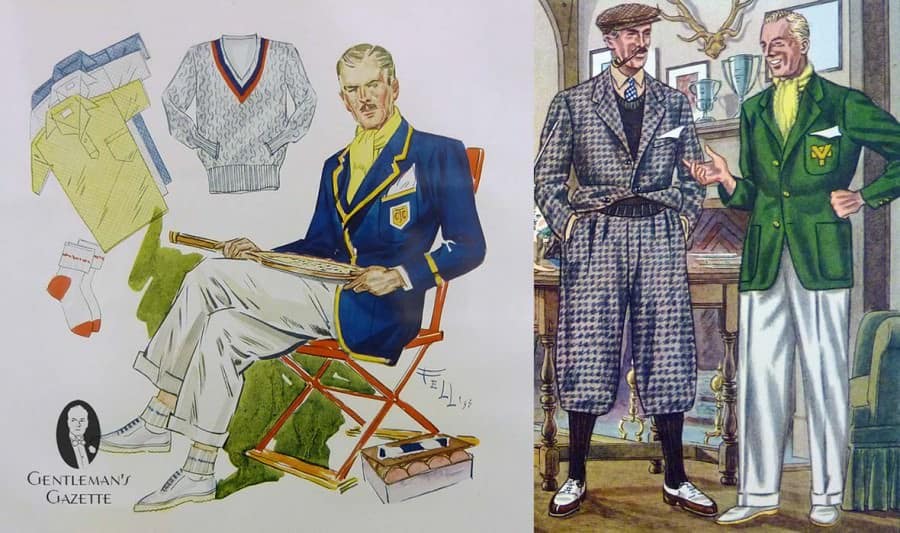
Tennis blazer and club blazer in green tweed with crest & white flannel trousers & white buckskin shoes from the 1930s
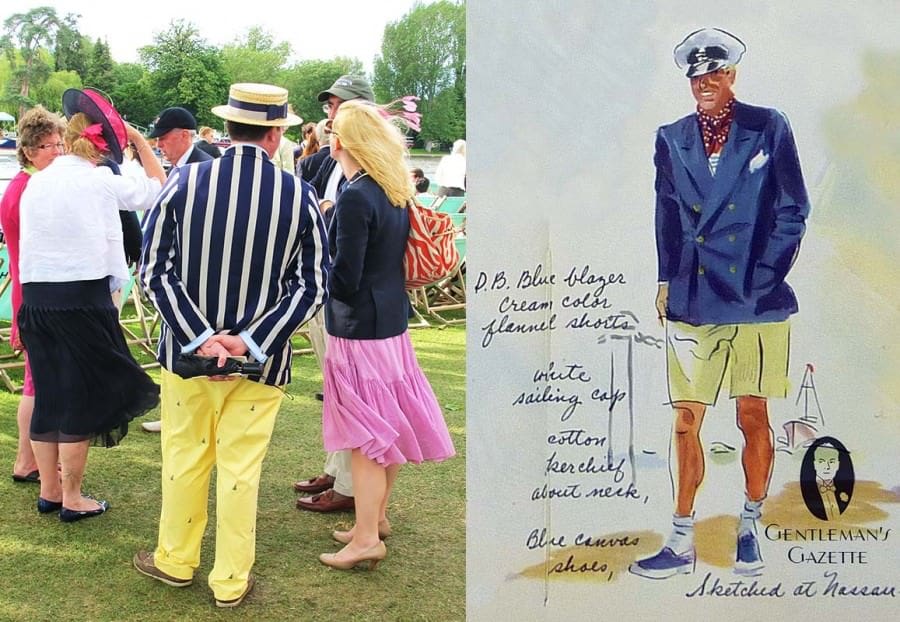
Blue and white striped blazer with yellow sailing pants at Henley Royal Regatta & 6×2 blazer with shorts from the 1930s
Fit of a Blazer
Generally, a blazer should fit like a suit jacket, though some men prefer for it to fit like a sport coat (meaning a little looser and wider with a bit more length) but other than that nothing is special here and all standard rules such as the proper sleeve length apply to the blazer as well. In terms of canvas or shoulder padding, most double-breasted blazers will have a more structured canvas and some shoulder padding, however with the popularity of the Neapolitan jacket, you will now find more unlined blazers with little to no shoulder padding and very soft interlining. As always, there is no objective right or wrong: the only thing that matters is what looks good on you and makes you feel good.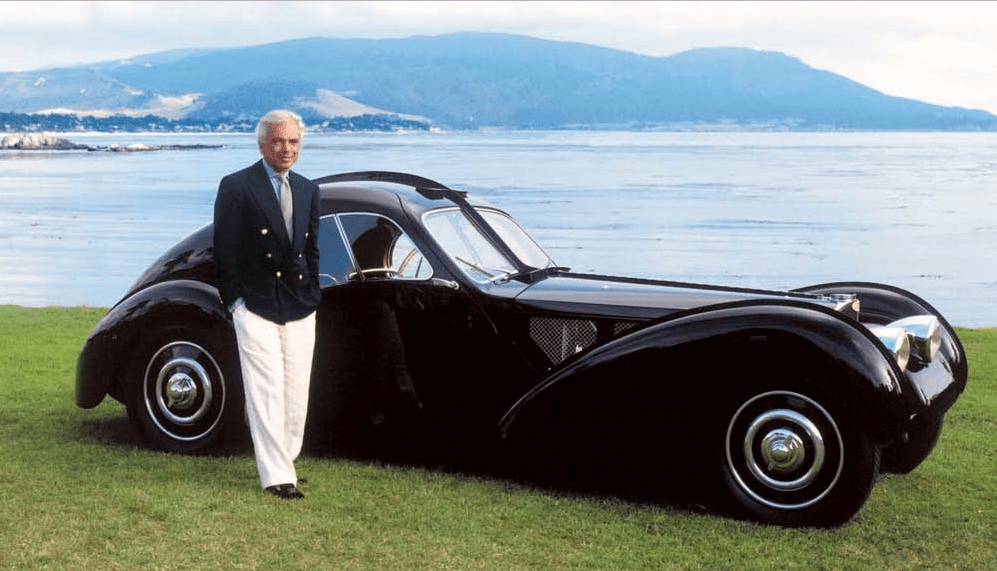
Ralph Lauren in a Navy Double Breasted Blazer and White Pants
- American is described as two buttons, single-breasted, navy blue with soft shoulders. Notch lapels, patch or flap pockets and a single vent.
- The English style has more structured shoulders in either single or double-breasted, notched lapel in the case of single-breasted and peak lapels in case of the double-breasted cut. It will have double vents in both cases. The single-breasted will have three buttons.
- The Italian or European style differs from the others in that the fabric is usually of lighter weight and the blazer is less structured.
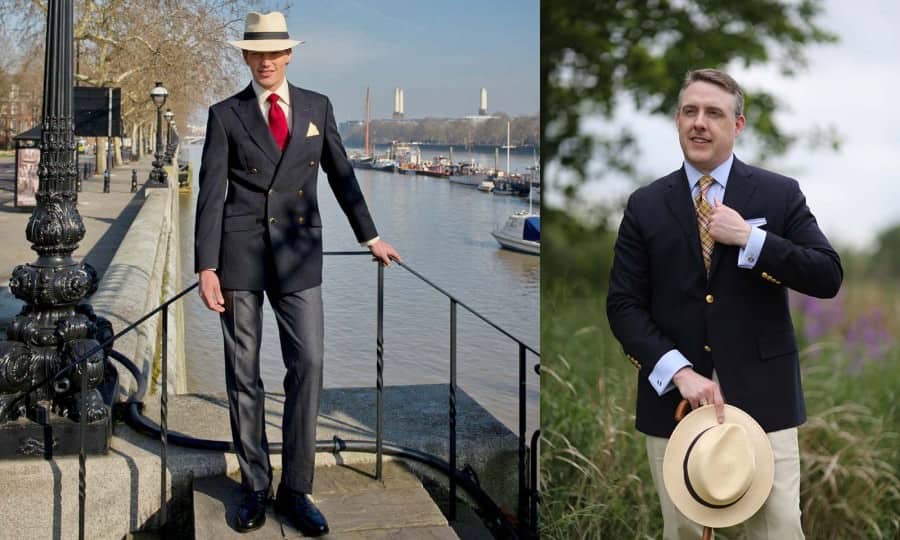
DB navy blazer with a red tie, grey flannel trousers and a Panama Hat by Oliver Brown; SB blazer with madras tie, chinos & Panama hat
How to Combine a Blazer
Just like vests or waistcoats, a blazer is very variable and can be worn with a number of different trousers and shirt & tie combinations.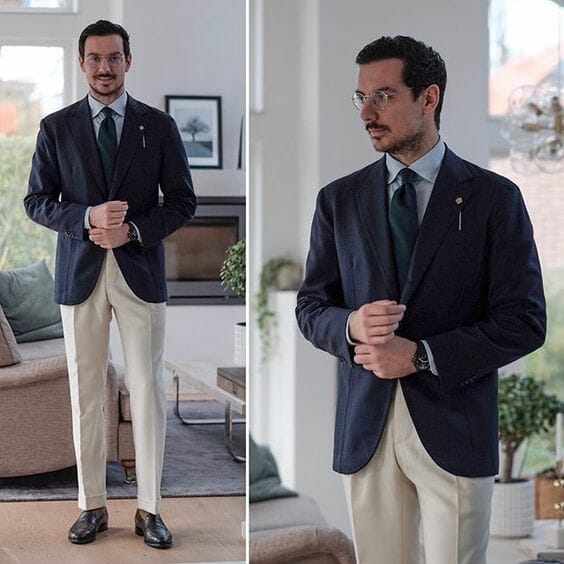
White Flannel Trousers
For a classic 1930s look, a navy or striped blazer with white or off white flannel trousers looks great. With a light blue oxford shirt, and green tie or ascot and maybe a cornflower or Edelweiss boutonniere, you will look very debonair. If spectator shoes in brown and white are too much for you, white buckskin shoes or shades of brown , including oxblood red will work well.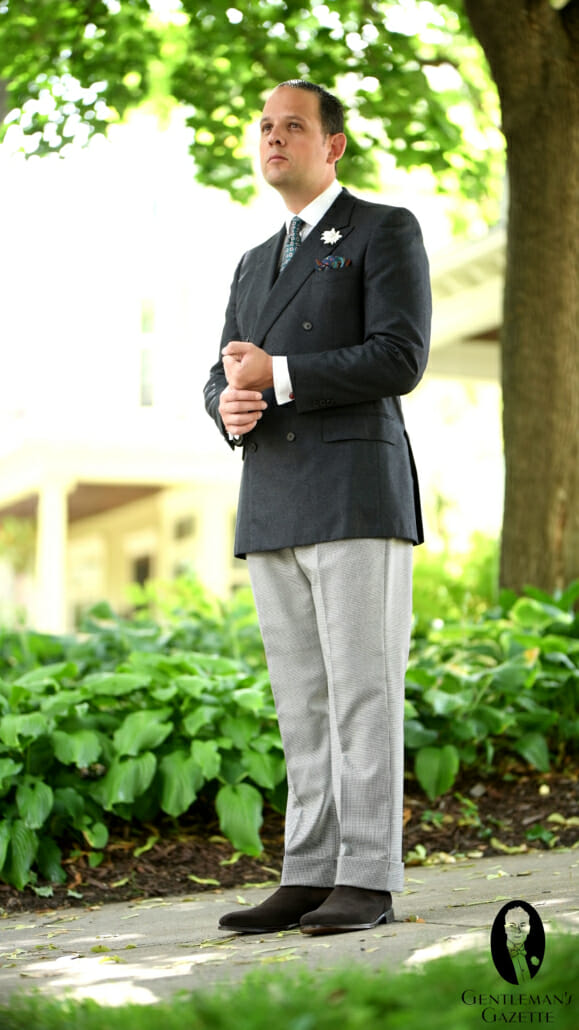
Gray flannel DB jacket paired with pleated houndstooth pants and chocolate brown Chelsea boots
Grey or Camel Flannel & Tie
Likewise a very classic look can be achieved with grey flannel (light grey and charcoal are both fine) pants or shades of camel. Most men will opt for a crisp white shirt or a light blue one with a repp tie. Of course, pale shirt colors such as light green, lavender, pink or salmon will work just as well. For a winter outfit, a wool challis tie or real ancient madder silk tie are ideal. If you want to add a bit more texture, go for a grenadine or even better, a knit tie. For grey trousers, you should wear black oxford and light-colored shades with brown. If you have a good understanding for color, I can also recommend bottle green shoes or oxblood.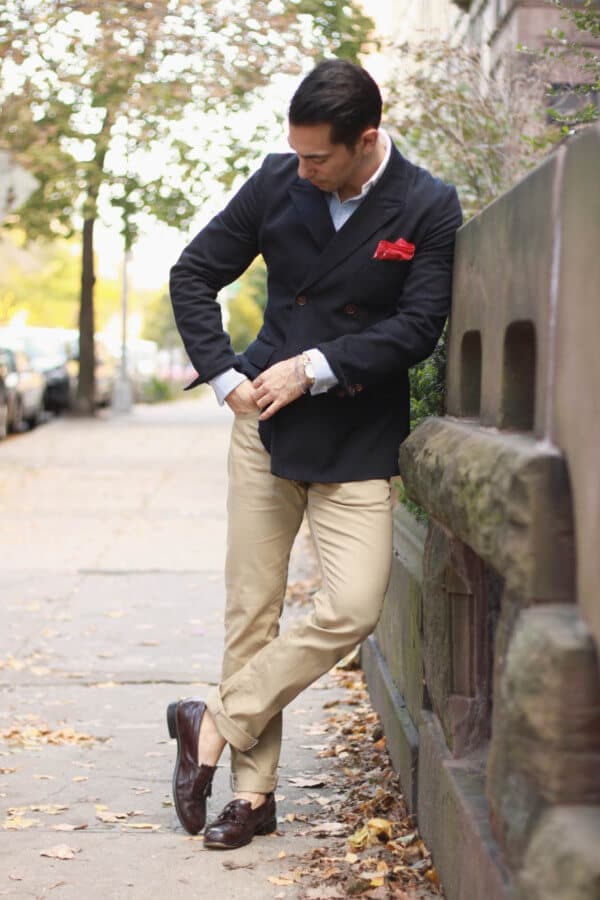
Chinos paired with a blazer for a classic appearance
Chinos
Chinos in khaki really make navy pop, and with a shared military background it is also historically a good companion. No matter if you opt for a fuller cut with pleats and cuffs or if you prefer a flat front, narrower and shorter cut, chinos go very well with a blazer. Don’t shy away from different colors: green, yellow, light blue, Nantucket Red…they all work with a navy blazer.Cavalry Twill & Corduroy
Most men won’t necessarily think of combining corduroy or cavalry twill trousers with a blazer but in burgundy, beige, rust or even a lighter brown – the combination can look quite stunning.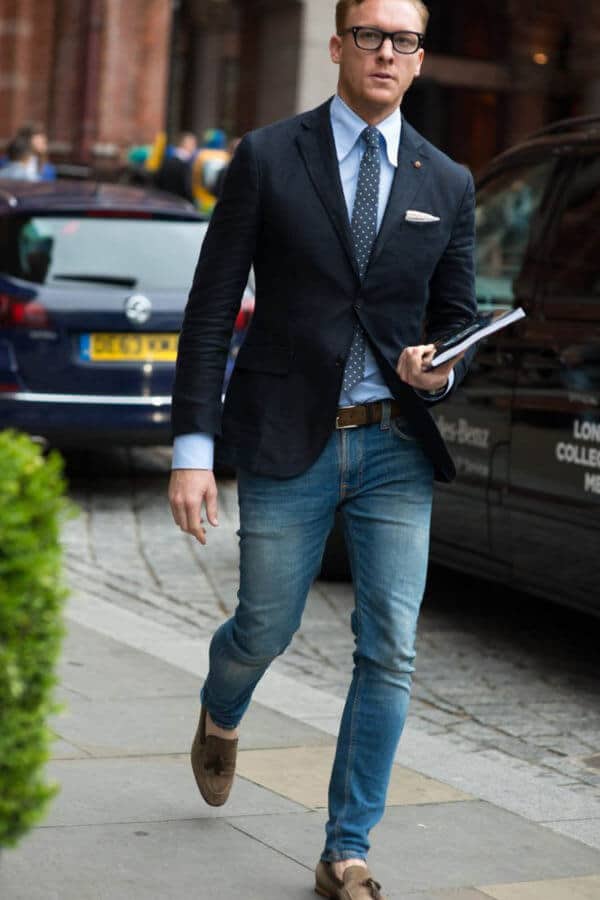
Jeans should be avoided unless approved by management
Jeans
Today, many men combine a blazer with jeans, loafers or boat shoes and a button-down oxford shirt, which is acceptable as well, and may be more appropriate for casual outings than the office.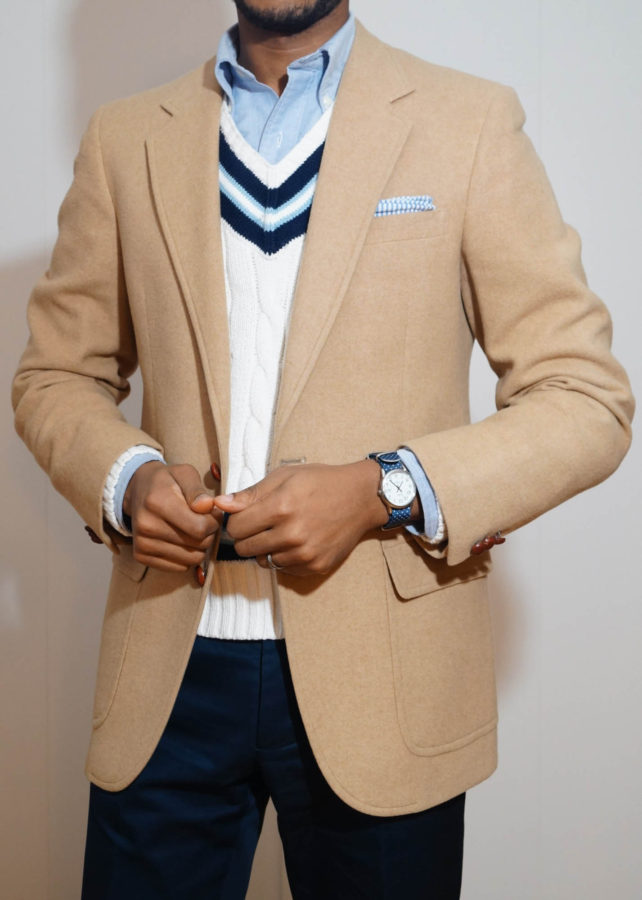
Wearing a tennis sweater under a blazer is risky but can work
Other Options
Some men think you can combine anything with a blazer and so you will see men wearing it with t-shirts or polo shirts. Whenever you wear a jacket, I recommend to go with long sleeves, and a casual shirt or dress shirt will always beat a polo shirt and especially a t-shirt. Instead of neckties, bow ties and ascots are always a good way to individualize your blazer outfit.Conclusion
The blazer today is an extremely versatile garment and is considered suitable attire for any situation be it casual, business casual or business informal. It can be worn with a wide variety of other clothes ranging from a shirt and tie to open-necked shirts. If you are beginning the building of your wardrobe, bear in mind that the blazer will likely be your number one garment in terms of versatility.What do you think about blazers? Do you wear them? If so, how? Please share your thoughts in the comments!
from Gentleman's Gazette https://ift.tt/1UtRXEz
- Get link
- X
- Other Apps
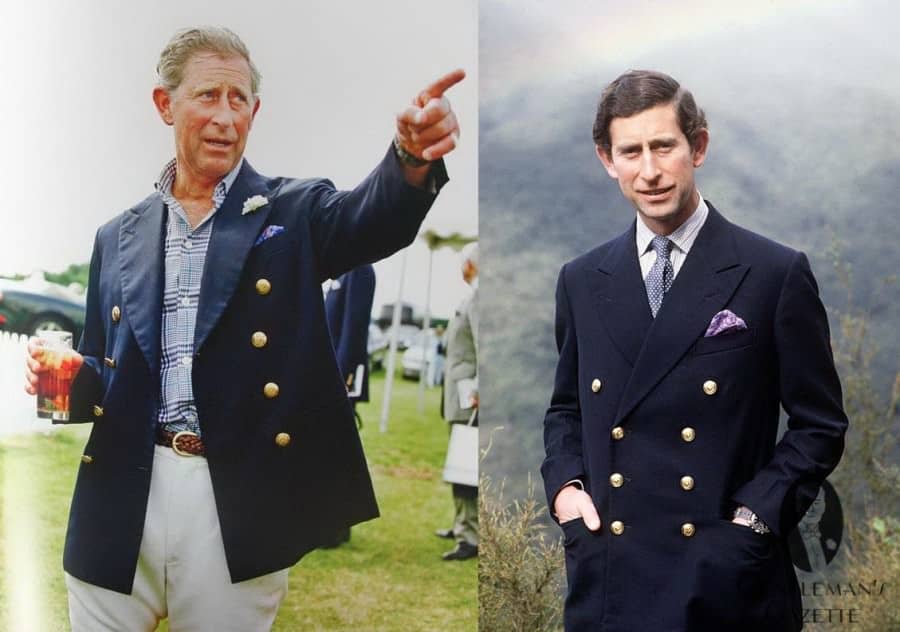
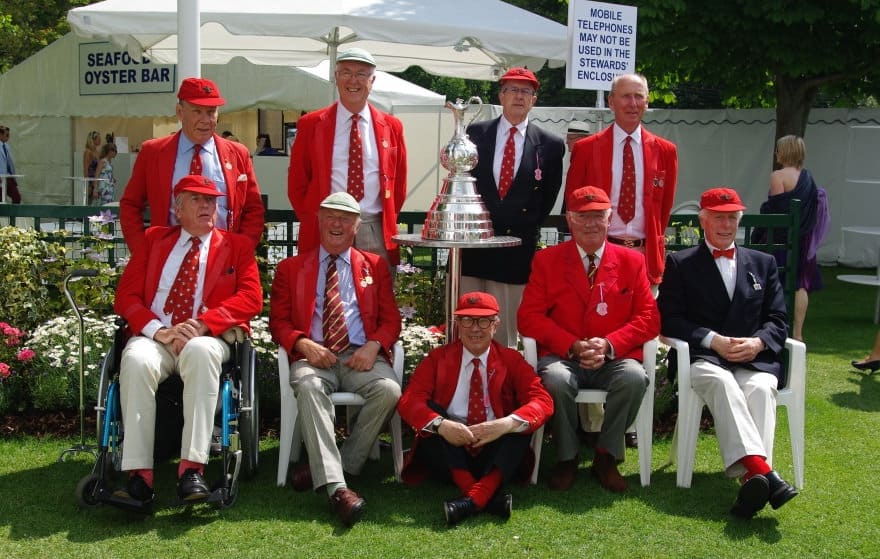
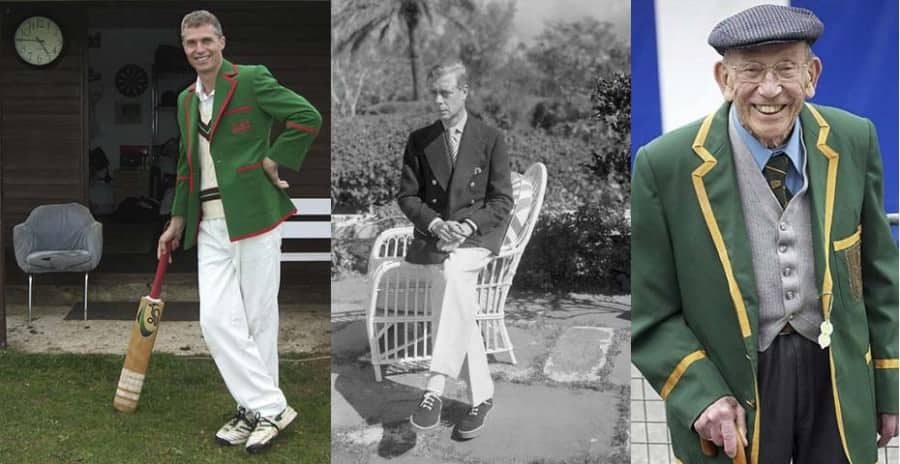
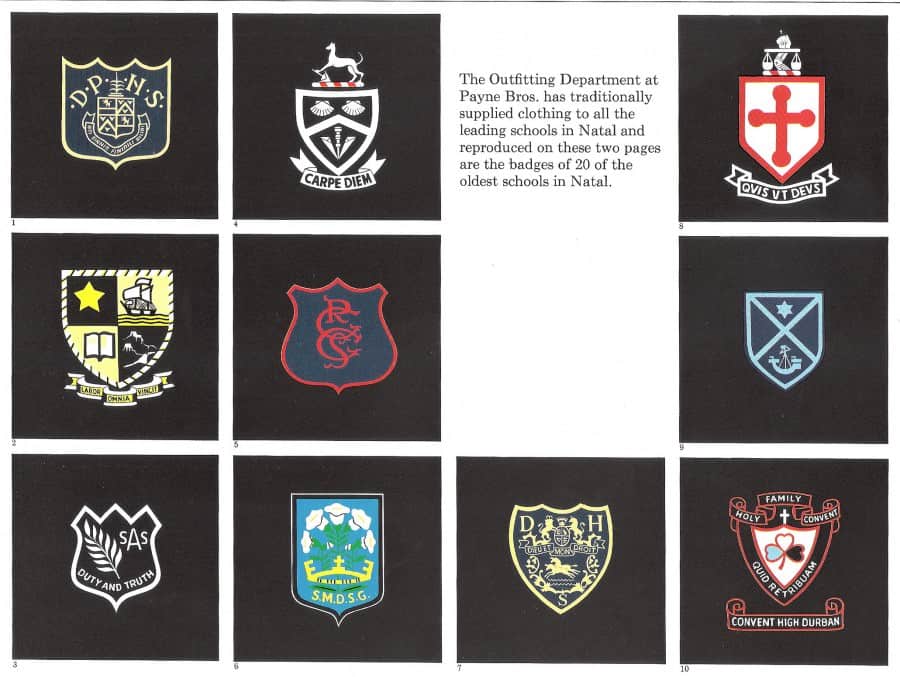
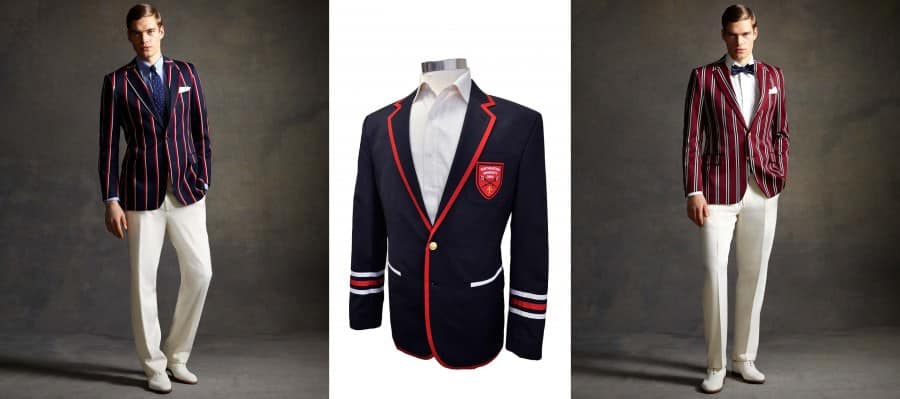
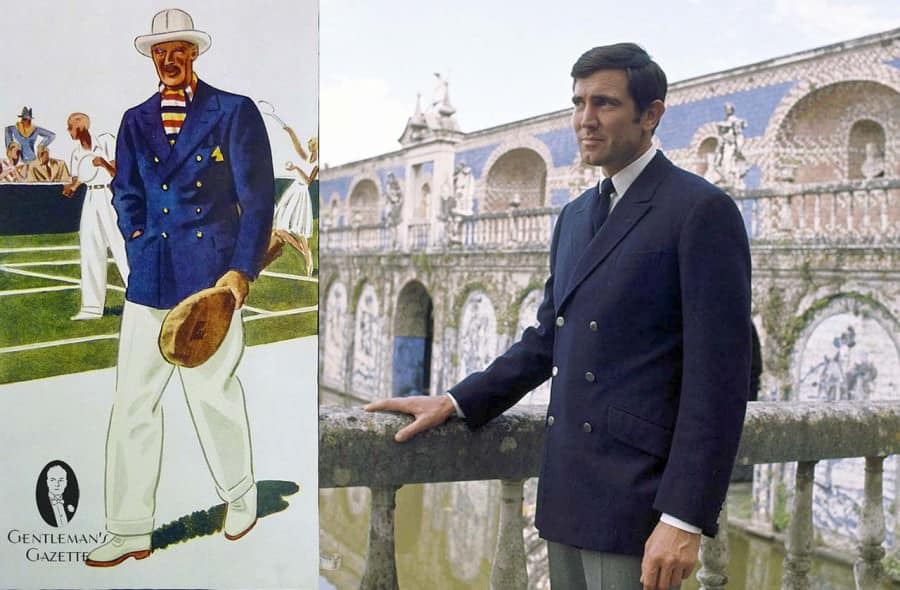
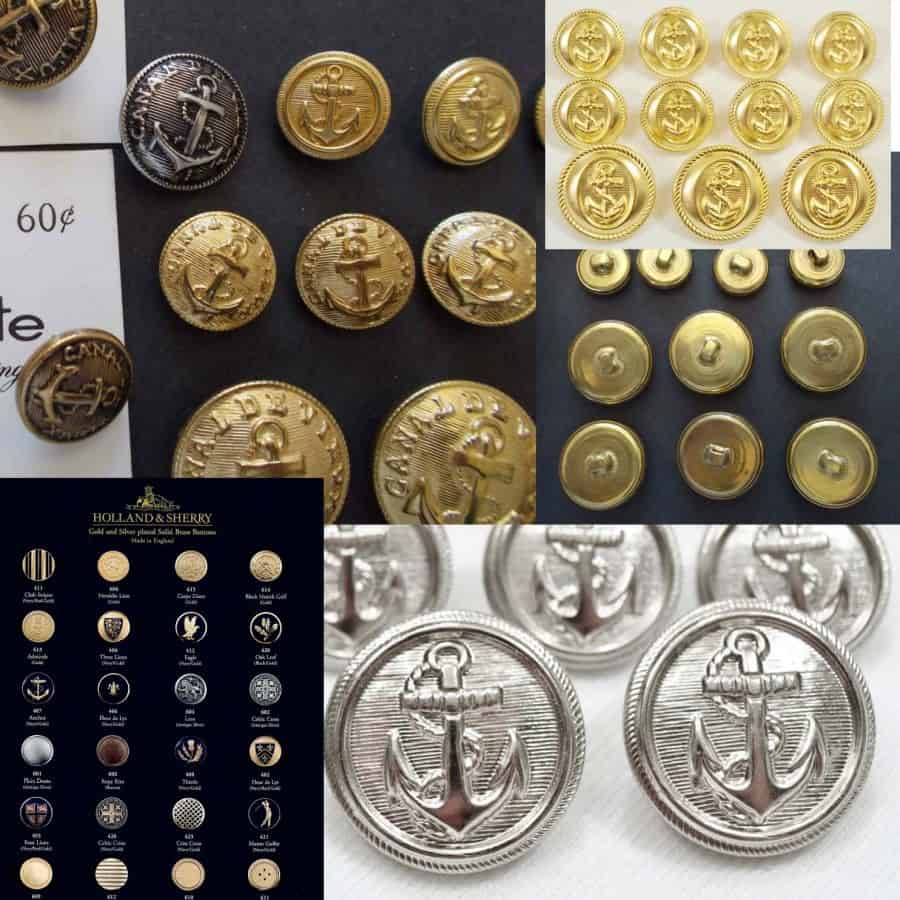
Comments
Post a Comment
thanks for your feedback